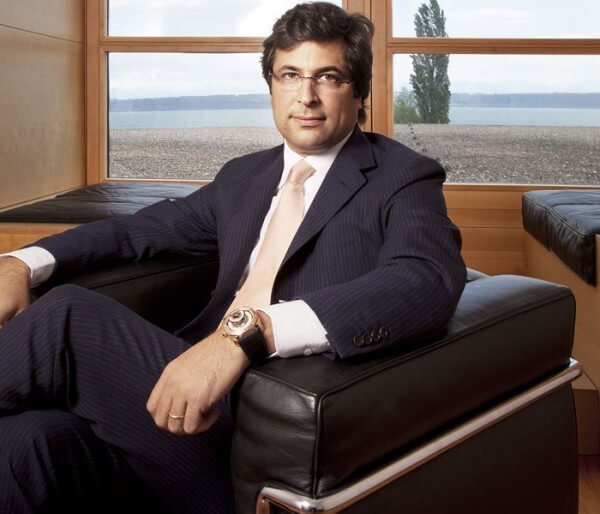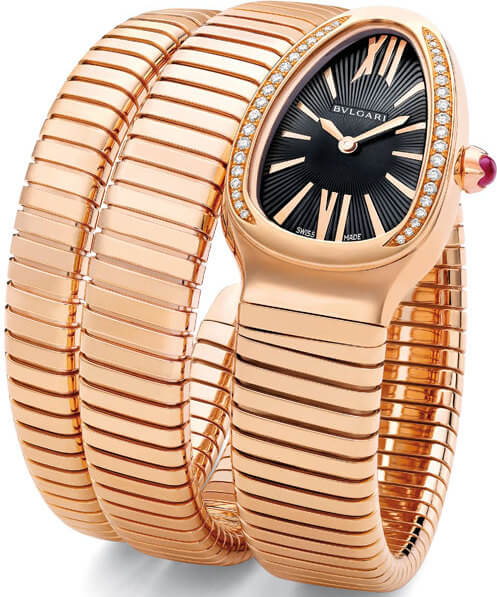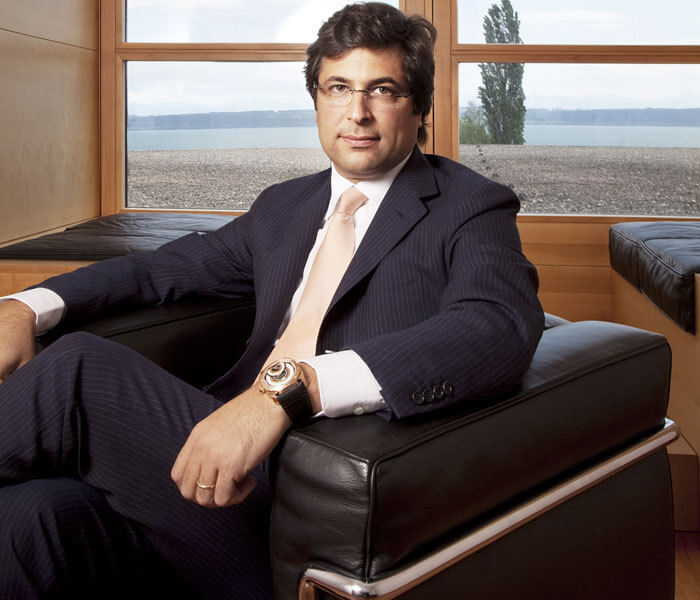“Our strategy is that of a table with four legs: jewellery, watches, fragrance and accessories,” Francesco Trapani, CEO of Bulgari, explained at the Reuters Global Luxury Summit this June. Effectively, after a decade of patient effort and investment, the Italian brand can stake its claim in the Fine Watch segment. “Our principal concern since the turn of the century has been to steer our growth in the watch segment, on the basis of cutting-edge expertise and manufacture movements,” commented Guido Terreni, Managing Director of Bulgari’s Watch Business Unit. “The late 1990s marked the end of the quartz era for Swiss watchmaking and a stronger industrial and mechanical emphasis. We had no intention of staying on the sidelines of this development, hence our decision to gradually integrate this expertise.”

Acquisitions and investment
This strategy has taken the form of massive investment through take-overs and new production facilities. The group made its first move in 2000, when Daniel Roth and Gérald Genta were brought into the Bulgari fold. Five years later, it took a stake in the dial-maker Cadran Design, which has since moved to a new factory in La Chaux-de-Fonds. Also in 2005, Bulgari added another string to its bow with the acquisition of Prestige d’Or, a manufacturer of steel and gold straps, followed two years later by Finger, a specialist in the manufacture of high-end cases. Alongside these acquisitions, the group has invested in a new industrial site for Roth and Genta in Le Sentier, and a production unit in La Chaux-de-Fonds where, as from September, the different activities involved in manufacturing a Bulgari movement will work under a single roof.
Now with a foot firmly in mechanical watchmaking, Bulgari began by presenting calibres that were developed in its Le Sentier workshops: the BVL 200 (tourbillon and power-reserve indicator), the BVL 261 (retrograde hours), the BVL 347 (moonphases, retrograde day and date), the BVL 416 (self-winding tourbillon, perpetual calendar and dual time zone) and the BVL 465 (self-winding tourbillon and perpetual calendar with double coaxial retrograde display). The digits refer to the number of parts in the movement. Not content with these realisations, the product of its successive acquisitions, Bulgari set out to make a base movement that would be entirely designed, developed and manufactured by Bulgari in La Chaux-de-Fonds. After three years of efforts and a trial run in the form of a retrograde date module, in January this year the company unveiled Calibre 168, a self-winding movement with instant-jump central date. In addition to powerful torque, Calibre 168 has a bi-directional oscillating weight and winding system, a disconnecting-gear device for the automatic-winding system during manual winding, and a cross-through balance bridge for improved rigidity of the regulating organ. In a word, this is a solid base movement designed as the starting-point for subsequent complications.
An exceptional year for Bulgari
“2010 is an exceptional year for Bulgari for three reasons,” Guido Terreni declared. “The first is, of course, the launch of our Calibre 168, a milestone in the development of our watchmaking activity. The second is the new face of the Serpenti, a jewellery watch that is part of our company’s history. The third is the integration of the Daniel Roth & Gérald Genta Manufacture in Le Sentier under the Bulgari image. A first in the Swiss watch industry, this will give rise to a new very high-end collection.” To make this connection clear, the Italian group has launched the Diagono Calibre 303, positioned around the entry-level of the Bulgari Collection Daniel Roth and Bulgari Collection Gérald Genta ranges.
The firm has given the “Italian touch” to models that include a grande sonnerie tourbillon, a minute repeater, jumping hours and retrograde minutes, and a tourbillon, split-seconds chronograph, date and power reserve. “We presented 19 pieces in all at Baselworld, with the focus on the quality of our new models. Bulgari is a brand with a strong identity that pursues its own vision. In watchmaking, this vision combines with powerful industrial development and, at the same time, a targeted collection based on small series of exceptional timepieces.”

Established in Rome in 1884 by Sotirios Boulgaris, a silversmith who came to Italy from his native Greece, Bulgari (Boulgaris Italianised) is still 51%-owned by the founding family. Over its 125 years, which the company celebrated last year, Bulgari has grown into one of the most prestigious names in jewellery whose customers include stars such as Sophia Loren and Charles Bronson. Its first incursion into watchmaking goes back to the 1940s, when the Serpenti watch was born. Several decades later, the Serpenti incorporated the entirely hand-made, flexible gold bracelet that would make it an icon of the brand.
The Bulgari Bulgari model, a meticulously structured piece with the Bulgari name engraved twice around the bezel, first appeared in 1977. Its launch was closely followed by the creation, in Neuchâtel, of Bulgari Time, the subsidiary in charge of developing the brand’s watchmaking and assembly activities. It currently employs some 450 people excluding production facilities in Le Sentier and La Chaux-de-Fonds. The brand moved into fragrances and accessories (leathergoods, eyewear and silk products) in the 1990s. Further diversification came in 2001 with the launch of Bulgari hotels and resorts, a joint venture with Mariott International.
China in its sights
Bulgari now has 270 directly-operated stores worldwide, generating turnover of around a billion euros with market capitalisation of €1.9 billion at mid-May 2010. Last year, the group posted a 14% drop in sales to €927 million with a net loss of €47 million. In the first quarter 2010, Bulgari has succeeded in bringing net loss from €29.3 million for the same period 2009 to €8.3 million, with turnover of €199.1 million (+12%). EBIT remains even. The company has also announced that orders taken at this year’s Baselworld were up 60% compared to 2009.
These quarterly figures position Bulgari at 2006 levels but with much lower profitability, with operating margins around zero from January to March 2010, versus 11% in 2006. This reflects a substantial increase in operating costs. According to JP Morgan Cazenove, Bulgari has little other choice than to continue to contain costs and grow sales, particularly in the watch segment which accounts for some 25% of its global turnover. The group effectively plans to invest massively in China which, alongside Hong Kong, Macau and Taiwan, accounts for 16% of its sales, gaining 40% in the first quarter. CEO Francesco Trapani has indicated that Bulgari will open four or five new stores there a year. If conditions remain stable, he forecasts a “prudent” increase of 4% to 6% in the group’s global turnover for 2010.


















